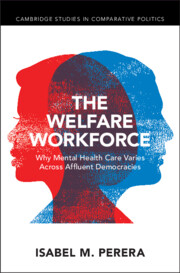This book began with a midnight shriek. It was loud, piercing, and desperate, the kind that makes you realize that something has gone irreparably wrong. The sound had reached my window, high on the tenth floor of an apartment building in downtown Philadelphia. As the howling continued, I inched closer to the window to discern its origins. There was a man circling the street corner, with movements that seemed to fluctuate between fury and fantasy. He was experiencing, it seemed, a psychotic episode.
While his mind paced, so did mine. Where could he go? Although this “public disturbance” might warrant a police arrest, surely that was not the most appropriate response. His needs seemed medical. A nearby health clinic? I didn’t know of any that could provide the level of psychiatric attention he required; and besides, most were closed by now. The emergency room? A single overnight stay might not be sufficient. I wondered, too, where he lived, whether he was able to keep a job, and to what extent his family could support him. The answers to these questions, I imagined, would likely disappoint. Comprehensive and long-term care for people with severe psychiatric conditions is difficult and expensive to obtain in the United States.
As a scholar of the comparative politics of social policy, I began to investigate mental health systems, both in the United States and in other countries. What might this man’s options have been in Paris, Stockholm, or Oslo? The answer was surprising. Psychiatric deinstitutionalization, whose mishandling US observers often blamed for their system’s contemporary ills, had occurred in parallel across the affluent democracies. All of them had transformed mental health care systems by depopulating residential psychiatric hospitals. Similar social movements, pharmaceutical developments, and fiscal changes had pressured these countries to reduce hospital-based care. But the results of these reforms varied widely. In some countries, such as the United States, policy-makers closed hospitals but failed to replace them with adequate social and medical supports. Other countries, though, developed much more expansive public mental health care systems. Moreover, contemporary mental health care seemed unrelated to general health care, as in the example of France, which developed public sector psychiatry despite the country’s long tradition of private general practice. It also seemed unrelated to other forms of social service provision. For example, although Norway and Sweden both tend to provide extensive, Scandinavian-style public services in most policy areas, the supply of public mental health care is much higher in Norway than in Sweden. From a political and economic standpoint, the high supply of services in some countries was puzzling because their beneficiaries rarely requested them; people with chronic and severe mental illness are the subjects of significant political, social, and economic disenfranchisement. Thus I arrived at the central empirical and theoretical questions that drive this book project: What explains the cross-national variation in mental health care services? And why, then, would the state supply services to those who are unable to demand them?
A potential answer appeared as I combed through the French archives. The Syndicat des médecins des hôpitaux psychiatriques (Trade Union of Psychiatric Hospital Physicians) seemed pivotal to every important mental health policy decision since the onset of deinstitutionalization. This group was unlike other associations of physicians. It was a trade union; and its members spent much of their time managing public institutions. Protecting government-funded psychiatric services – and their employees – was central to the trade union’s mission. Nurses, attendants, and social workers, also represented by trade unions, were close coalition partners. Although patient advocacy was limited, the coalition between organized managers and workers in the public sector served as a political counterweight to the financial pressure to reduce services, advancing policies that both protected their employment and broadened the spectrum of care. Yes, France deinstitutionalized the mentally ill in the late 20th century; but it did so by expanding outpatient services, not by closing most of its hospitals.
The timing of these events, I soon realized, was no coincidence. Mental health workers gained political influence precisely as other service sector employees gained a greater share of overall employment. In 1960, the average western democracy employed about the same share of workers in industry and in services (about 37 and 41 percent, respectively). Today, service sector employment has nearly doubled (to 78 percent), while industrial employment has halved (to 20 percent) (Brady et al. Reference Brady, Huber and Stephens2020, author’s calculations). Employment in social services, in particular, underpinned much of this transition, as countries began to expand their health, education, and social care systems. The effects were both personal and political, and sometimes experienced over a single generation. If the postwar worker had found employment in an auto plant, his daughter might find it in a hospital. Moreover, if his representative trade unions once sought to protect the car industry, hers now seek to expand the health sector. Such were the claims that arose across the affluent democracies during deinstitutionalization. By the late 20th century, the growing numbers of workers employed by the welfare state – what I call the “welfare workforce” – had become a significant actor in its politics.
Viewed against this backdrop, the transformation of mental health care is a window into how government employees are shaping social policy. This book examines both these subjects. Empirically, I document the historical and contemporary variations in mental health care services across the affluent democracies, tracing how coalitions of public sector managers and workers drove the expansion of services in France and Norway, while their absence in the United States and Sweden produced the opposite outcomes in those countries. Theoretically, I explore a new distributive logic of welfare provision. In striking contrast to the postwar period, it is public sector, not private sector, unions that now often shape social policy. I investigate when, why, and how they gain influence, and with what implications for those the welfare state promises to serve.

